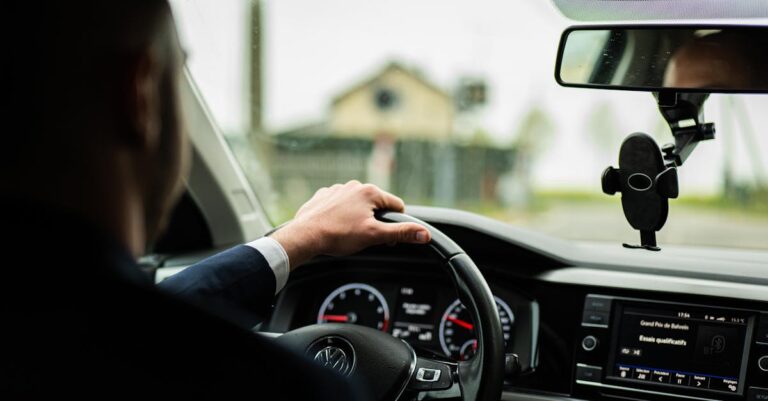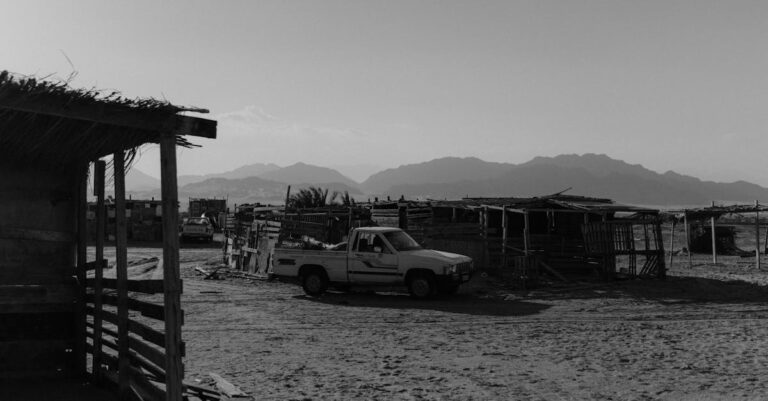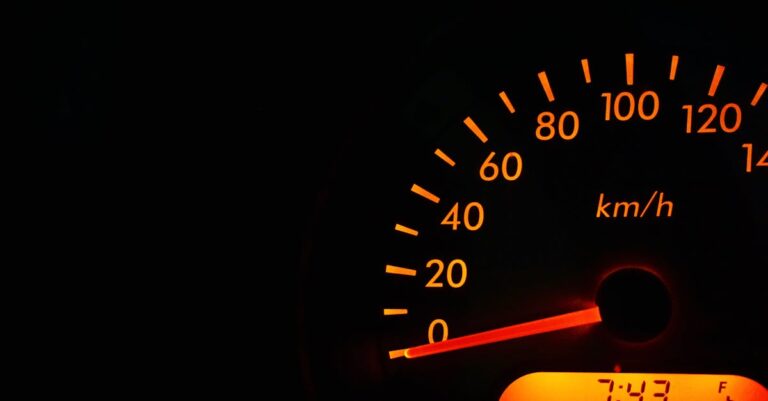**Table of Contents**
“`html
What Is Gap Insurance: Do You Need It?
Understanding the “Gap” in Car Insurance
So, What Exactly Is Gap Insurance?
When Does Gap Insurance Kick In?
Who Typically Needs Gap Insurance?
When Might You Not Need Gap Insurance?
Where Can You Buy Gap Insurance?
How Much Does Gap Insurance Cost?
Is Gap Insurance Worth the Cost? Weighing the Pros and Cons
Making the Final Decision: Do You Need It?
Conclusion: Bridging the Financial Gap
Frequently Asked Questions (FAQs)
“`
**Article**
“`html
What Is Gap Insurance: Do You Need It?
So, you’re getting a new (or new-to-you) car? Exciting times! Amidst the thrill of test drives and that new car smell, you might hear the term “gap insurance” thrown around, especially if you’re financing or leasing. It sounds important, maybe a little confusing? You might be wondering, “What on earth is gap insurance, and do I actually need this thing?” Let’s dive in and figure it out together, shall we?
Understanding the “Gap” in Car Insurance
Before we get into the insurance itself, let’s understand the “gap” it’s designed to cover. Think of it like a little financial pothole you could fall into under specific, unfortunate circumstances.
What Does “Gap” Even Mean?
In this context, “Gap” actually stands for Guaranteed Asset Protection. Fancy, right? But what it really boils down to is the difference – the gap – between what you still owe on your car loan or lease and what your car is *actually* worth (its Actual Cash Value or ACV) at the time it gets totaled or stolen. Sometimes, unfortunately, you owe more than the car is worth.
The Problem: Depreciation vs. Loan Balance
This gap happens primarily because of two things working against each other: how quickly cars lose value and how slowly (sometimes) you pay off your loan.
How Cars Lose Value (Fast!)
Cars, especially brand new ones, depreciate. And they often depreciate *fast*. The moment you drive that shiny new car off the lot, it starts losing value. Some studies suggest a new car can lose 10% or even 20% of its value within the first year alone! Think of it like an ice cube melting on a hot day – the value just starts dripping away immediately. This depreciation continues over time, though the rate usually slows down after the first few years.
Why Your Loan Balance Might Be Higher
Now, contrast that rapid depreciation with your car loan. When you finance a car, especially with little or no money down, or over a long period (like 60, 72, or even 84 months!), your loan balance decreases much more slowly than the car’s value. In the early years of the loan, a larger portion of your payment goes towards interest rather than the principal amount you borrowed. This mismatch creates the potential gap: the amount you owe could easily be higher than the car’s current market value.
So, What Exactly Is Gap Insurance?
Okay, now that we understand the potential problem, let’s talk about the solution: gap insurance.
The Definition in Simple Terms
Gap insurance is an optional type of car insurance coverage that helps pay off your auto loan if your car is totaled or stolen and you owe more than the car’s depreciated value (its ACV). It covers the *difference* – that financial gap we talked about – between the ACV payout from your comprehensive or collision insurance and the outstanding balance on your loan or lease. It’s essentially protection against being financially “upside down” on your loan after a total loss.
How Gap Insurance Works: A Real-Life Scenario
Let’s imagine a scenario. Say you bought a brand new car for $30,000. You financed most of it, and a year later, you still owe $27,000 on your loan. Unfortunately, you get into a bad accident, and your insurance company declares the car a total loss. Because of depreciation, they determine the car’s Actual Cash Value (ACV) is now only $22,000.
Your comprehensive or collision insurance (whichever applies) will pay out that $22,000 (minus your deductible, say $500, so $21,500 goes towards the loan). But wait… you still owe $27,000! Where does the remaining $5,500 ($27,000 – $21,500) come from? Without gap insurance, that $5,500 comes straight out of *your* pocket. You’d be stuck paying off a loan for a car you don’t even have anymore!
With gap insurance, however, it would step in and cover that $5,500 difference (or most of it, depending on the policy specifics). Phew! Financial disaster averted.
When Does Gap Insurance Kick In?
It’s crucial to understand that gap insurance isn’t all-purpose coverage. It only applies in very specific situations.
Total Loss Situations Only
Gap insurance *only* comes into play if your car is declared a total loss by your primary auto insurer. This typically happens under your comprehensive or collision coverage. It does *not* cover routine repairs, maintenance, car payments if you lose your job, or the deductible on your standard policy (though some gap policies might include deductible assistance – always check the fine print!).
Car Accidents
If you’re involved in a collision and the damage is so severe that the cost to repair it exceeds the car’s actual cash value (or a certain percentage of it, depending on the insurer and state regulations), the insurer will declare it totaled. If you owe more than the ACV payout, gap insurance can help.
Theft
If your car is stolen and not recovered, your comprehensive insurance will typically pay out the ACV. If that payout is less than what you still owe on your loan or lease, gap insurance can cover the difference.
Other Covered Perils (Fire, Flood, etc.)
Comprehensive coverage also protects against non-collision events like fire, flood, vandalism, falling objects, or hitting an animal. If your car is totaled due to one of these perils, and a gap exists between your loan balance and the ACV payout, gap insurance would apply.
Who Typically Needs Gap Insurance?
While not legally required (unless stipulated in your lease or loan agreement), gap insurance is highly recommended for certain drivers and financing situations. Are you one of them? Let’s see:
Leasing a Vehicle? You Probably Need It.
Most lease agreements actually *require* you to carry gap insurance. Why? Because with a lease, you’re paying for the depreciation during the lease term, and the leasing company wants to ensure their asset (the car) is fully protected. If the leased car is totaled, gap insurance protects both you and the leasing company from owing money on a car that no longer exists.
Financing a New Car? Especially with a Small Down Payment.
If you financed a new car and made a down payment of less than 20%, you’re a prime candidate for gap insurance. Remember that rapid depreciation in the first year? A small down payment means you have less equity built up initially, making it much more likely that you’ll owe more than the car is worth early in the loan term.
Long Loan Terms (60+ Months)? Consider It.
Loan terms stretching out to five, six, or even seven years are increasingly common. While they might lower your monthly payment, they also mean you’re paying off the principal much more slowly. This extends the period where you could be “upside down” – owing more than the car’s value. Gap insurance provides crucial protection during these extended loan periods.
Driving High Mileage Annually? Depreciation Alert!
Cars that rack up miles faster tend to depreciate faster. If you have a long commute or just drive a lot (typically over 15,000 miles per year), your car’s value might drop more quickly than average, increasing the likelihood of a gap.
Rolling Negative Equity into a New Loan? Definitely Look Into It.
Sometimes, people trade in a car they still owe money on, and that remaining loan balance gets added (“rolled into”) the loan for their new car. This is called negative equity, and it instantly puts you significantly upside down on your new loan. If you’re in this situation, gap insurance is almost certainly a very wise investment.
When Might You Not Need Gap Insurance?
Gap insurance isn’t for everyone. There are situations where the risk of having a “gap” is minimal, and the extra cost might not be necessary.
Large Down Payment (20% or More)
If you put down a substantial amount of money upfront (generally 20% or more of the purchase price), you’ve created instant equity. This significantly reduces the chance that you’ll owe more than the car is worth, even with initial depreciation.
Paying Cash or Owning Outright
This one’s pretty straightforward. If you paid cash for your car or have already paid off your loan, there’s no loan balance to worry about! Therefore, there’s no “gap” to insure. You own the car free and clear.
Short Loan Term
If you opted for a shorter loan term (say, 36 or 48 months), you’re paying off the principal much faster. Combined with a decent down payment, you’ll likely build equity quickly enough that the gap risk diminishes rapidly or never really exists.
Driving an Older Car That Depreciates Slowly
Used cars, especially those a few years old, have already undergone their steepest depreciation. Their value tends to decrease much more slowly. If you’re financing an older used car, the chances of owing significantly more than its worth are lower, especially if you made a reasonable down payment.
Where Can You Buy Gap Insurance?
You generally have a few options when it comes to purchasing gap insurance. It pays to shop around!
The Dealership (Often Most Expensive)
When you buy or lease your car, the dealership finance office will almost certainly offer you gap insurance. It’s convenient because you can often roll the cost into your car loan. However, be aware that this is typically the *most expensive* way to buy gap coverage. They mark it up significantly.
Your Auto Insurance Company (Usually Cheaper)
A much more cost effective option is usually to add gap coverage directly to your existing auto insurance policy (assuming you have comprehensive and collision coverage). You’ll need to inquire with your agent or company, as not all insurers offer it, but those that do typically charge far less than dealerships, often just a few extra dollars per month on your premium.
Specialized Gap Insurance Providers/Credit Unions
There are also standalone companies that specialize in selling gap insurance. Sometimes, your bank or credit union (if they are financing your loan) might also offer gap insurance at a competitive rate. It’s worth exploring these options as well.
How Much Does Gap Insurance Cost?
The price tag for gap insurance isn’t fixed; it varies based on several factors.
Factors Influencing the Price
Several things can affect the cost of your gap insurance premium:
- Vehicle Value: More expensive cars often mean higher gap premiums.
- Loan Amount: The larger the potential gap (higher loan to value ratio), the higher the cost might be.
- Depreciation Rate: Cars known to depreciate faster might have slightly higher gap costs.
- Where You Buy It: As mentioned, dealerships are usually much pricier than insurers.
- State Regulations: Insurance costs can vary by state.
Comparing Costs: Dealership vs. Insurer
Let’s put some rough numbers on it. Buying gap insurance from a dealership might cost you a lump sum of anywhere from $400 to $900 (or even more!), often rolled into your loan so you pay interest on it. Buying it through your auto insurer, however, might only add $20 to $60 *per year* to your existing policy premium. That’s a huge difference! Always get quotes from your insurance company before agreeing to the dealership’s offer.
Is Gap Insurance Worth the Cost? Weighing the Pros and Cons
Ultimately, deciding if gap insurance is “worth it” is a personal financial decision based on your risk tolerance and specific circumstances.
The Peace of Mind Factor
For many people, the biggest benefit is simply peace of mind. Knowing that you won’t suddenly be hit with a bill for potentially thousands of dollars for a car you no longer have can be incredibly reassuring, especially if money is tight. It removes a significant financial risk associated with financing or leasing.
Potential Savings vs. Premium Paid
Consider the potential gap you might face. If you financed $30,000 and the car could be worth only $22,000 after a year, that’s an $8,000 potential gap (before your deductible). Compare that potential out of pocket expense to the relatively low annual cost of gap insurance purchased through your insurer (maybe $40-$60 per year). In high risk situations (low down payment, long loan term), the small premium seems like a very reasonable price to pay to avoid a much larger potential loss.
Making the Final Decision: Do You Need It?
So, back to the original question: do you need gap insurance? Review the scenarios we discussed:
- Are you leasing? (Likely yes, and probably required)
- Did you make a small down payment (less than 20%)? (Probably yes)
- Do you have a long loan term (60+ months)? (Good chance yes)
- Did you roll negative equity into the loan? (Definitely yes)
- Do you drive a lot of miles? (Maybe, consider it)
- Did you make a large down payment? (Probably no)
- Are you paying cash or own the car outright? (Definitely no)
- Do you have a short loan term? (Likely no)
Analyze your specific loan, your down payment, the car’s depreciation potential, and your personal financial situation. If a potential gap of several thousand dollars would cause significant financial hardship, then gap insurance is likely a smart move.
Conclusion: Bridging the Financial Gap
Gap insurance acts like a financial safety net, specifically designed to protect you if you owe more on your vehicle loan or lease than its actual cash value when it’s declared a total loss. It bridges that potentially costly gap between your insurance payout and your outstanding loan balance. While not necessary for everyone, it’s invaluable for those leasing, financing with little money down, taking out long term loans, or rolling over negative equity. Remember to shop around – purchasing through your auto insurer is usually far cheaper than buying from the dealership. By understanding what gap insurance is and evaluating your own situation, you can make an informed decision and ensure you’re adequately protected on the road ahead.
Frequently Asked Questions (FAQs)
1. Can I cancel gap insurance later?
Yes, in most cases, you can cancel gap insurance. If you bought it as a lump sum from the dealership (often rolled into your loan), you might even be eligible for a prorated refund for the unused portion. If you added it to your auto policy, you can typically remove it at any time, especially once your loan balance drops below the car’s value. It’s wise to cancel it once you’re no longer “upside down” to save on premiums.
2. Does gap insurance cover my deductible?
Typically, no. Standard gap insurance covers the difference between the ACV payout and the loan balance. It usually doesn’t cover your comprehensive or collision deductible. However, some gap policies sold (often at a higher price) may include deductible assistance up to a certain amount. Always read the policy details carefully to understand exactly what is and isn’t covered.
3. What if my car is worth more than my loan when it’s totaled?
If your car’s Actual Cash Value (ACV) is higher than your outstanding loan balance at the time of a total loss, then gap insurance doesn’t come into play. Your standard collision or comprehensive coverage would pay off the loan, and the remaining amount (the difference between the ACV and the loan payoff) would be paid out to you. In this scenario, you have positive equity, and gap insurance isn’t needed.
4. Is gap insurance the same as new car replacement coverage?
No, they are different, though sometimes confused. New car replacement coverage is an optional add on to your standard auto policy that helps you buy a brand new car of the same make and model if your relatively new car is totaled. Gap insurance simply pays off the difference between your loan balance and the ACV; it doesn’t provide funds to buy a new vehicle, only to clear the debt on the totaled one.
5. How long do I need gap insurance?
You only need gap insurance as long as you owe more on your car loan or lease than the car is worth. As you make payments and the car depreciates, eventually your loan balance will drop below the car’s ACV. At that point, you likely no longer need gap coverage. You can check your car’s estimated value (using online resources like Kelley Blue Book or NADA Guides) and compare it to your current loan payoff amount periodically to see when you can safely cancel the coverage.
“`









